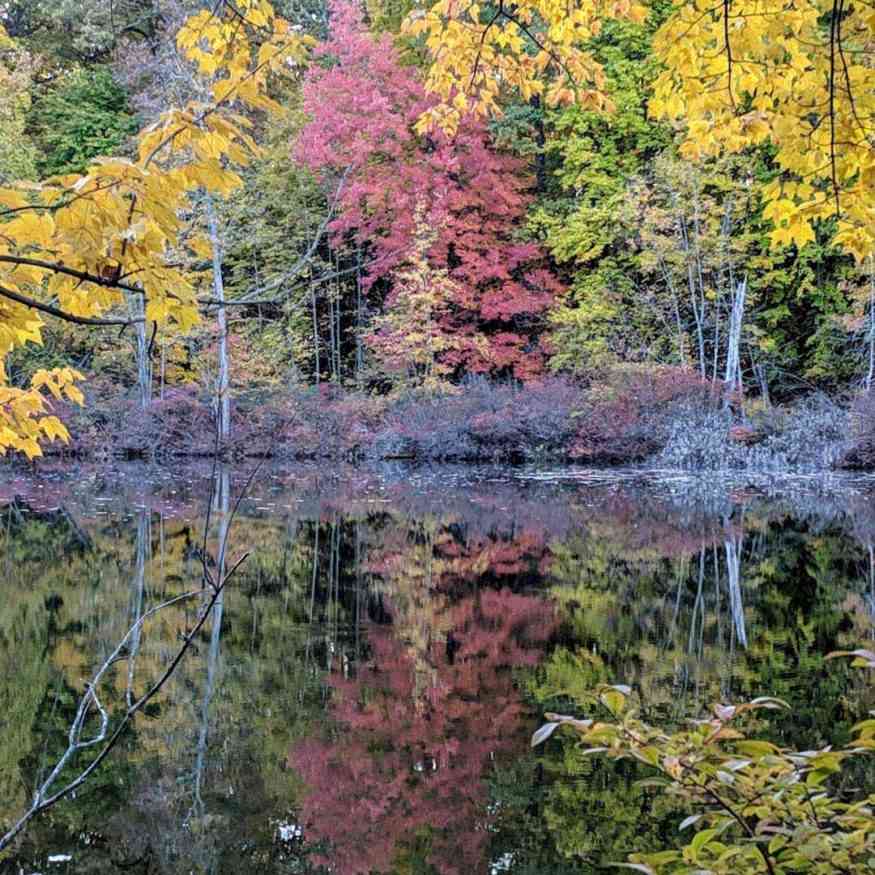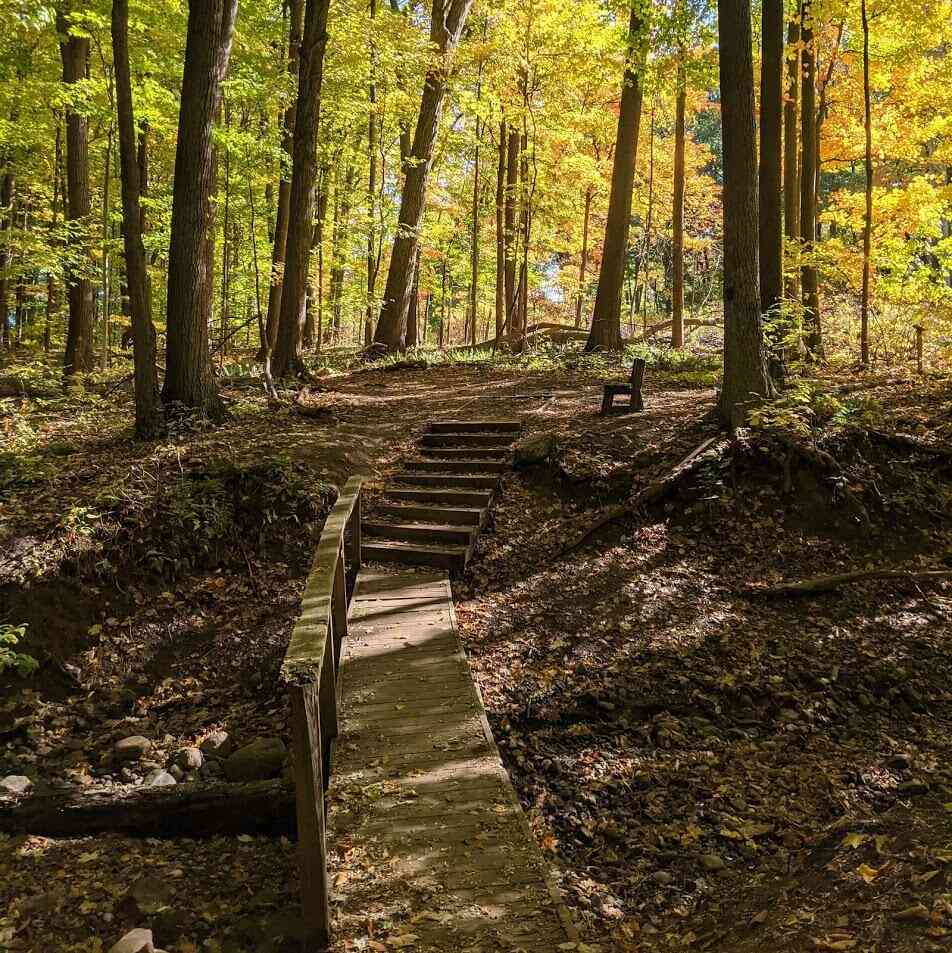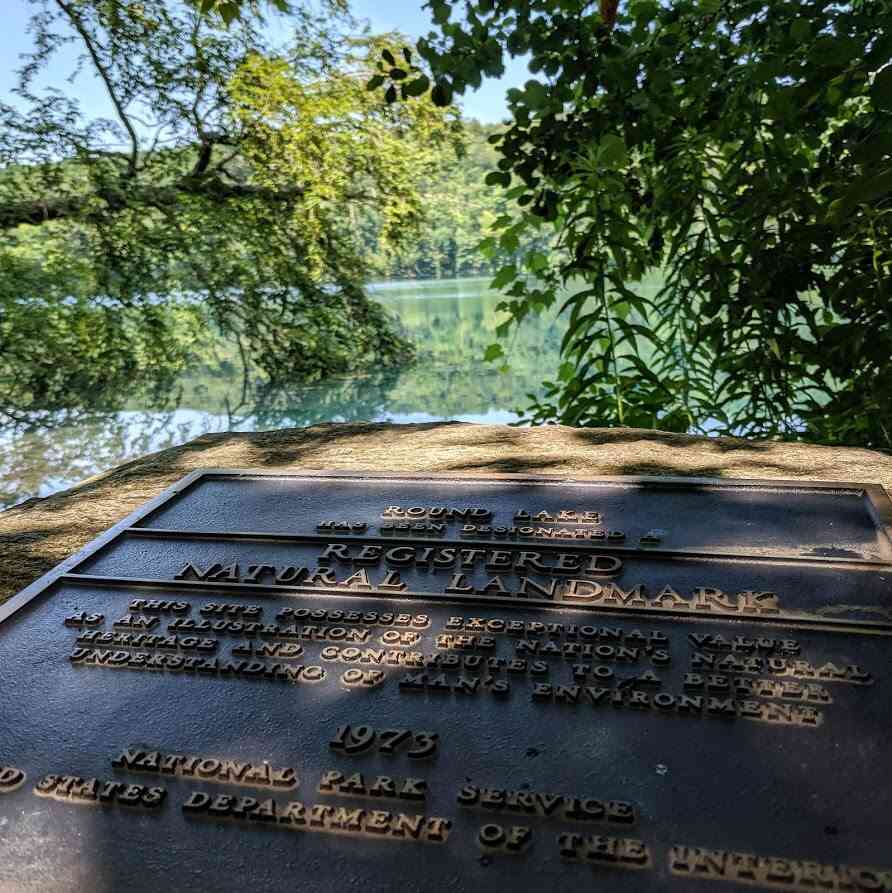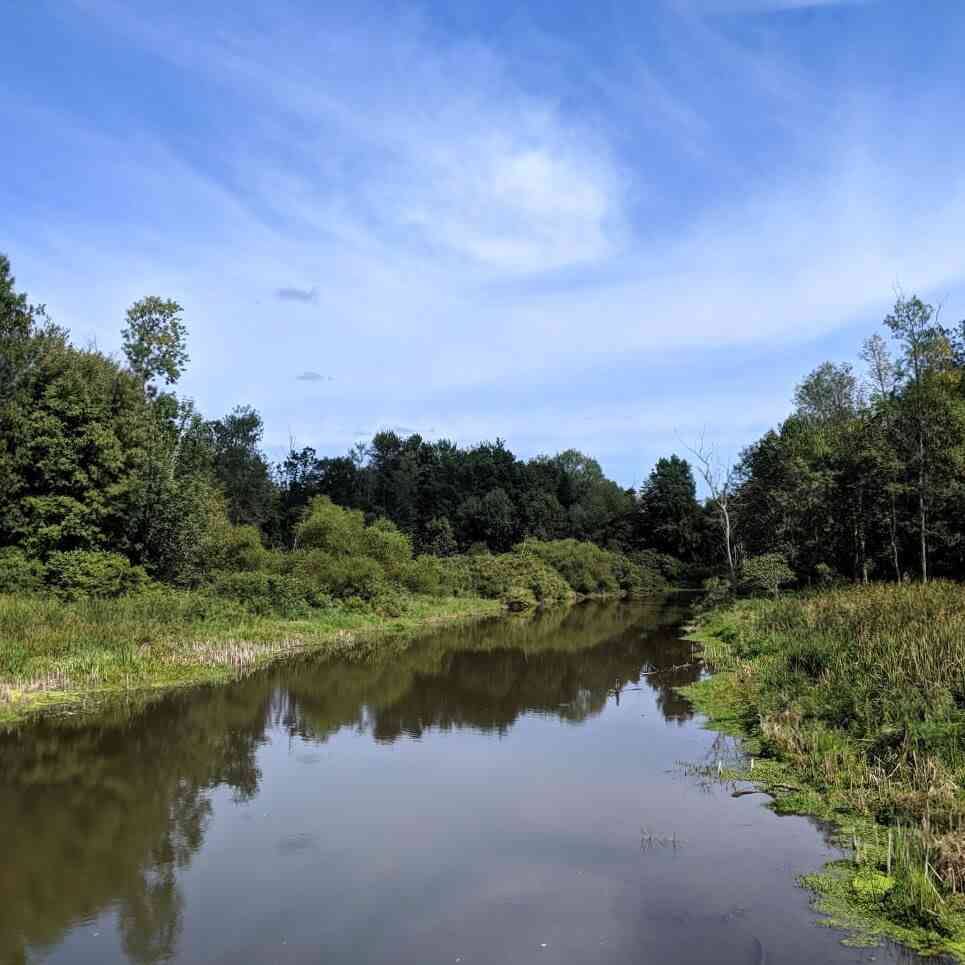These National Natural Landmarks, recognized for their outstanding biological and geological resources, are all within a two-hour drive of Rochester, New York.
ad




1. Mendon Ponds
Monroe County
National Natural Landmark est. 1967 – 2,462 acres
Mendon Ponds Park contains unique glacial features, including kames, eskers, esker fans, kettle holes, erratics, bogs, and ponds. Mendon Ponds Park is the largest Monroe County Park with 2,500 acres of woodlands, ponds, wetlands, and glacially created landforms, including Devil’s Bathtub, a meromictic lake like Green and Round Lakes. Finding an exact depth for Devil’s Bathtub has been challenging, but two local geologists have recently stated its depth to be roughly 47 feet at its deepest point.
ad




2. Hart’s Woods
Monroe County
National Natural Landmark est. 1972 – 14 acres
There is room for one or two cars at the end of Greenwood Cliff, but I suspect most folks park at Minerva DeLand School down the hill. Hart’s Woods is a rare remnant of an original glacial-period beech-maple forest in Perinton. This type of forest, with two dominant tree species, thrives in areas of glacial till. If an imaginary line is drawn from East Rochester to the southeast corner of the town, the beech-maple forest dominates the area north of that line.



3. Fall Brook Gorge
Livingston County
National Natural Landmark est. 1970 – 102 acres, private property
Fall Brook Gorge in Geneseo represents one of the nation’s finest exposures of Upper and Middle Devonian Age strata with significant fossil remains and a cap-rock waterfall. The gorge possesses a series of ecological communities in a small area that illustrate the response of plant and animal life to sharply contrasting microclimates. Though private property, Trail Otter provided these photos from past authorized walks.
Never run out of places to explore.
Get fresh day-trip ideas in your inbox!




4. Round Lake
Onondaga County
National Natural Landscape est. 1973 – 100 acres
Get Directions to the state park entrance
Round Lake, located within Green Lakes State Park, is one of 11 meromictic lakes reported in the United States. The site also contains about 20 acres of outstanding virgin mesophytic forest adjoining the lake. Both Round and Green Lakes are meromictic lakes, which means that surface and bottom waters do not mix in the fall and spring. Such lakes have a high potential for evidence of ancient plant and animal life.

5. Bergen-Byron Swamp
Genesee County
National Natural Landmark est. 1964 – 2,000 acres
The Bergen-Byron Swamp encompasses diverse forest and wetland habitats that is unusually rich in plant and animal life. The Bergen Swamp is a 10,000-year-old natural ecological succession following the retreat of the glaciers. The lichens were the first organisms to grow on the barren rock left by the retreating glaciers. And yet, lichens are still found in the Bergen Swamp climax communities, long after the pioneer stage of natural succession.
It is the first private environmental land trust in the United States to be chartered as a New York State living museum and the first such site to be designated a National Natural Landmark.

6. Zurich Bog
Wayne County
National Natural Landmark est. 1973 – 490 acres
Zurich Bog is a good example of northern sphagnum bog and bog forest vegetation, which is uncommon in north-central New York. The Zurich Bog is a large, moderately acidic wetland between large drumlins. Such wetlands were never common in this portion of the Great Lakes plain but have become increasingly rare since European settlement due to drainage, filling, and pollution. Thus, such a bog, particularly one of such size, is a rare treasure in this area.

7. Montezuma Marshes
Seneca County
National Natural Landmark est. 1973 – 2,100 acres
Get Directions to the main pool (Black Lake) entrance and visitor center
Montezuma Marshes, located within the Montezuma National Wildlife Refuge, is a marsh dominated by broad-leaved cattail. The site’s small, 100-acre area is one of the best examples of undisturbed swamp woodlands in New York or New England.
The Refuge provides over 9,000 acres of protected lands and managed wetlands for wildlife. Sixteen shallow-water impoundments offer more than 4,700 acres of freshwater wetlands. Adjacent uplands, which include grasslands, shrub fields, and forested tracts, are also actively managed for wildlife.

8. Moss Lake Bog
Allegany County
National Natural Landmark est. 1973 – 84 acres
Moss Lake Bog is a classic example of a postglacial sphagnum bog invading and filling a small kettle lake. It illustrates the various stages of bog succession well. Moss Lake Preserve is managed by The Nature Conservancy.

9. Fossil Coral Reef
Genesee County
Natural National Landmark est. 1967 – 50 acres
Get Directions to the steam shovel. The quarry is private.
Fossil Coral Reef (private property), also known locally as Bradbury Quarry or Le Roy Quarry, is an abandoned limestone quarry in Le Roy, New York, and is an exposed fossil site. The reef is the finest display of Devonian coral reef in New York and includes core, flanking, and off-reef deposits, with rare tabulate and rugose corals, crinoids, gastropods, and trilobites.
Here is a fun fact about the Marion Steam Shovel pictured above: it is the last one known to exist in the world. It may also have inspired Mary Ann in the book Mike Mulligan and His Steam Shovel.

10. Oak Orchard Creek Marsh
Genesee County
Natural National Landmark est. 1973 – 600 acres
Get Directions to the visitor center
Located within Iroquois National Wildlife Refuge, Oak Orchard Creek Marsh is a relatively undisturbed marsh, a rare ecosystem for this part of New York. The refuge serves primarily as a nesting, feeding, resting, and staging area for migratory waterfowl. The varied habitats support approximately 266 species of birds and 42 species of mammals, plus reptiles, fish, amphibians, and insects.
At 10,828 acres, Iroquois National Wildlife Refuge is the largest wildlife refuge in New York State, not including the surrounding Oak Orchard and Tonawanda Wildlife Management Areas. The Alabama Swaps amasses a 19,000-acre complex designated for wildlife.
11. Deer Lick Nature Sanctuary
Cattaraugus County
National Natural Landmark est. 1967 – 410 acres
Deer Lick Nature Sanctuary, located in Zoar Valley, contains a gorge that clearly illustrates the exposed stratifications of the Onondaga escarpment. The site also supports a mature northern hardwood forest. Deer Lick offers a variety of forest types to experience, from meadow-edge pioneer species to old-growth hemlock-northern hardwoods. During your hike, you can catch glimpses of striking shale canyon walls. Deer Lick Conservation Area is managed by The Nature Conservancy.

More information about National Natural Landmarks
The National Natural Landmarks Program recognizes and encourages the conservation of sites with outstanding biological and geological resources. The Secretary of the Interior designates sites for their condition, illustrative character, rarity, diversity, and value to science and education. The National Park Service administers the program and works cooperatively with landowners, managers, and partners to promote the conservation and appreciation of our nation’s natural heritage.
Explore More
Western New York’s Top 4 Rock Cities—All Easy Day Trips from Rochester
Discover four rock cities near Rochester, where moss-draped boulders, narrow canyons, and panoramic trails await.
Geologic History of the Rochester Area
These day trips into Rochester’s geologic history will remind you just how amazing our corner of the Earth is.
Transformative Travel Destinations
Instead of being an escape, I see these places as opportunities that encourage us to transcend space, time, and our state of mind.
Penn Dixie Fossil Park and Nature Reserve
Penn Dixie Fossil Park is a hidden gem just 10 miles south of Buffalo. Visitors can find and collect 380 million-year-old fossils.
Have you visited any of our National Natural Landmarks?
I’d love to hear from you—please share your thoughts and experiences in the comments below.


Help Support My Work
People often ask if I get free access to the places I visit. The answer is no—unless I’m invited to a special preview or offered behind-the-scenes access through my media role. Most of the time, I don’t even mention Day Trips Around Rochester, New York when I visit a place. I want to have the same experience you would.
I create and share this content because it brings me joy—and I hope it adds value to your adventures, too.
If my work has helped you explore and appreciate the Rochester area, please consider becoming a paid subscriber on Substack. You’ll receive an email whenever I publish new content and have the chance to connect with a growing community of local explorers.
Thank you for supporting my efforts to keep producing meaningful and helpful content.
Thank you!
Debi


